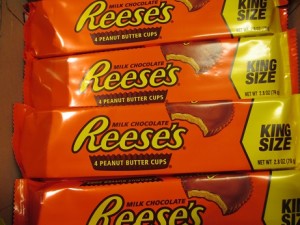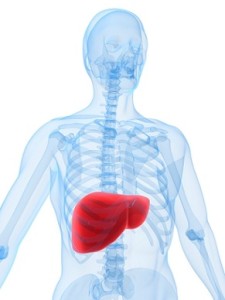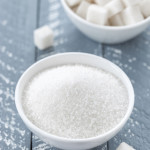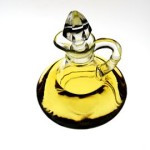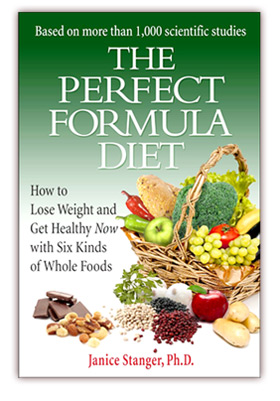
While many would label sugar as the greatest evil in these doughnuts, in fact less than a quarter of the calories in this ultra-processed food typically come from sugar
The Health Effects of Sugar Are Exaggerated While More Harmful Ingredients are Ignored
Sugar has become the scapegoat for everything wrong with the health of Americans. Media, government authorities, and even some doctors blame sugar as the chief culprit – if not the only culprit – for epidemics of obesity, diabetes, heart disease, liver disease, even cancer. The truth is far more complex, and understanding sugar’s secondary role, vs. other dietary villains, will put you in a much better position to avoid the most dangerous foods.
The Worst Dangers in So-Called Sugary Foods
If you ask people to name sugar-laden foods, a typical list might include cookies, cakes, pies, pastries, ice cream, soda, and candy. Others might count the prepared foods that have added sugars, such as many condiments, fast foods, and frozen meals. If sugar is the chief culprit in the health consequences of these foods, you might expect that most of their calories would come from sugar.
In fact, a recent analysis found that only 21% (on average) of the calories in these foods come from sugar. This 2016 study in the prestigious medical journal BMJ
Open looked at ultra-processed foods, defined as “industrial formulations which, besides salt, sugar, oils and fats, include substances not used in culinary preparations, in particular, flavors, colors, sweeteners, emulsifiers, and other additives used to imitate sensorial qualities of unprocessed or minimally processed foods and their culinary preparations or to disguise undesirable qualities of the final product.”
Yum. It turns out that Americans get almost 58% of their total calories from these ultra-processed chemistry experiments. “Foods” in this category include the dessert and snack foods listed above, as well as salty snacks, frozen and shelf stable meals, pizza, some cereals, sauces and gravies, ready-to-eat sandwiches, instant and canned soups, and French fries.
An accurate description for these concoctions is not “sugary foods,” but “chemical laden-fatty-sugary ,” or CFS foods for short.
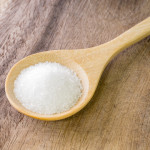
Very few people eat plain sugar by the spoonful. Instead, ultra-processed foods combine sugar with other ingredients that are even worse for your health
Here are some examples of the secondary role that sugar plays in foods popularly labeled as “sugar”:
- Breyers homemade vanilla ice cream: 37% of calories from sugar
- Chips Ahoy! reduced fat chocolate chip cookies: 29% of calories from sugar
- Reese’s peanut butter cups: 40% of calories from sugar
- Typical cake-type doughnuts (plain, chocolate-coated, or frosted) per USDA database: 23.6% of calories from sugar
So where do the rest of the calories come from? For many ultra-processed foods, the majority of calories actually comes from fats – animal fats or extracted plant oils. Measure for measure, fat has over twice the calories of sugar (nine calories per gram, vs. four in sugar and other carbohydrates). The concentrated calories in fat fuel obesity, and fat particles harm your arteries. In addition, extracted oils easily become rancid, either before you eat them or once in your body. These damaged fat particles than attack you, causing harmful oxidation and cellular devastation.
Ultra-processed calories may come from highly refined grains. While there is overwhelming evidence that whole grains are healthy, refined grains are not. Remember, grains are seeds, and whole grain products contain all parts of the seed. Refined grains contain only a portion of the seed, after most of the fiber and nutrients have been stripped out. So one of the hazards of processed grains is simply that these crowd out whole grains.
The remainder of the calories in ultra-processed foods come from protein, often from animal products, such as eggs, milk, or whey (a dairy waste product). The lengthy list of health hazards in animal products requires a book to adequately discuss, but includes hormones, many inflammatory and carcinogenic fats and chemicals, and

Both so-called “natural” and artificial flavors are designed to manipulate your taste buds so you keep eating way past the amount of food you need
heavy metals.
To understand harm to your health and irresistible food cravings, you also need to consider all the added chemicals in ultra-processed foods. While these do not typically contain calories, they may damage your cells, as well as “hook” you to eat more and more of products deliberately designed to trick your taste buds and make you a permanent consumer.
What About Soda?
While all ultra-processed foods, by definition, contain manmade chemicals, the role of these additives stands out for soda. These carbonated drinks (unlike most solid ultra-processed foods) typically do get the vast majority of their calories from sugar. However, soda is a chemical cocktail, not simply sugar stirred into water.
The chemicals used vary from soda to soda. Here are a few examples:
- Phosphate: cola drinks and some other soda flavors contain an easily-absorbed form of phosphorus, a mineral that, when circulating at high levels, damages your blood vessels and bones
- Caramel color: present in many colas and root beer, among other products, caramel color exposes you to the potential carcinogen 4-MEI
- Flavoring: the nonprofit Environmental Working Group clarifies there is little difference between the safety of “natural” flavors and “artificial” flavors, including both in their list of dirty dozen food additives. Most sodas contain one or both kinds of these chemicals
What About Your Liver?
An alarmist accusation against sugar is directed at fructose, one form of sugar. The allegation is that fructose, which is largely metabolized in the liver, damages this organ.
Here are the facts. The liver is the largest organ in your body and has a long list of critical functions. These include metabolizing fructose among many other things; your liver is also charged with metabolizing galactose (the sugar in dairy foods), as well as proteins and fats. Your liver must also detoxify the chemical additives in CFS foods.
The liver is perfectly designed to do its job and it not generally harmed by normal operation. However, unnatural concentrations of substances to be metabolized can definitely create problems, as can manmade chemicals concentrated in CFS foods. Concentrated protein (for example, in animal foods and protein powders) is itself harmful, as protein metabolism floods the liver with toxic ammonia. Getting rid of protein waste products stresses both your liver and kidneys.
Chemical laden-Fatty-Sugary Foods: Can You Safely Eat Any?
Here are the main reasons that CFS foods are harmful:
- They displace healthy foods in your diet – most of the fiber and beneficial natural substances in the plants the CFS food is constructed from are destroyed in the manufacturing process
- Empty calories lead to obesity as your nutrient receptors are not satisfied, and your body will send you out to get more food. This may contribute to binge eating and other eating disorders
- The extracted oils are pro-oxidants that cause the formation of cell-destroying free radicals
- The added chemicals are designed to corrupt your taste buds so your prefer ultra-processed foods over their whole foods rivals. For example, you may come to prefer flavored orange soda or candy to real oranges-the added chemicals manipulate your taste buds and warp your appreciation of healthy foods
- The stew of manmade chemicals may contribute directly to health issues
- Most CFS foods also contain harmful animal food ingredients, such as dairy and/or eggs
Is sugar addictive, as is so often claimed? Frequently cited animal studies on this question prove nothing about humans. It’s the CFS combo that appears to generate compulsive eating for many people, and we don’t know what individual components trigger and compulsion. It’s likely the additive effect of the CFS combination.
Most whole foods, plant-based diets, as recommended by leaders of this eating plan, include some allowance for small amounts of CFS and/or animal foods. These are typically limited to five to ten percent of total calories. Some people are fine with this level of
consumptions. Others, because of health issues or problems with eating disorders, cannot eat any CFS or animal foods without health issues or reverting to the typical health-destroying American diet.
Remember, you can change your tastes and food preferences. The more you eat whole plant foods, the more you like them. However you choose to eat, be aware of single-minded, deceptive attacks on sugar from the media and powerful competing industries. The truth is that added sugar is bad, added chemicals and extracted oils are worse. Animal foods are the worst of all.
If you enjoyed this discussion, you may want to read this post with more insight into the health benefits of whole grains.
Intrigued? Now you can use our Whole Foods Blog Finder to target informative, fun postings on whole foods, plant-based diets. Quick information at no cost!
Blog posting written by Janice Stanger, Ph.D. Janice authored The Perfect Formula Diet: How to Lose Weight and Get Healthy Now With Six Kinds of Whole Foods. This book guides you to a whole foods, plant-based diet that includes a budget for 5% of your calories to come from occasional treats, if you choose to eat these.
Tags: CFS foods, chemical laden, extracted oils, fatty, food additives, sugar, sugary foods, ultra-processed food, whole foods plant-based diet
